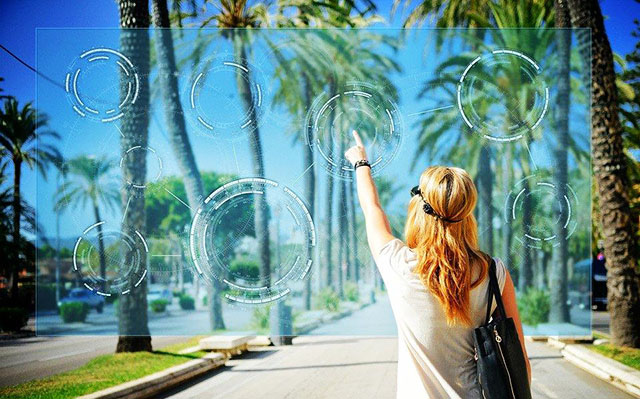What is the metaverse
The term "metaverse" and "Avatar" were first mentioned in science fiction author Neal Stephenson's "Snow Crash", published in 1992. People can have their own virtual doubles in the "Metaverse", a virtual world called the "metaverse": "By putting on a headset and goggles and finding a terminal, you can enter through a connection Another 3D reality simulated by a computer. Each person can have his or her own doppelganger in this virtual space parallel to the real world."
The metaverse is not a new concept, it is more like a rebirth of a classic concept, a conceptualization materialized under new technologies such as extended reality (XR), blockchain, cloud computing and digital twins.
The most representative definition of "metaverse" is: "metaverse" is a virtual space parallel to and independent of the real world, an online virtual world that maps the real world, and an increasingly realistic digital virtual world.
"Wikipedia's description of the "metaverse" is more in line with the new characteristics of the "metaverse": a physical reality augmented by the virtual, convergent and physically persistent characteristics, based on the future Internet, with connected perception and the ability to connect. A future Internet-based 3D virtual space with connected perception and shared characteristics.

Metaverse concept-related investments
In March 2021, Roblox, a gaming company, found the concept of "Metaverse" in a science fiction novel published 29 years ago and wrote it in its own prospectus, becoming the "first stock of metaverse". On the day of the IPO, the market capitalization reached $38.3 billion, a tenfold jump compared to a year earlier.
In May 2021, Facebook said it would transform into a meta-universe company within 5 years;
(b) In August 2021, ByteDance spent a huge amount of money to acquire Pico, a VR startup;
The three basic historical stages of the metaverse
The first stage: the classical form of "metaverse" with literature, art and religion as the carrier.
In this stage of history, the Bible, Dante's Divine Comedy, even Da Vinci's Mona Lisa and Bach's religious music all belong to the "meta-universe" in the Western world. Among them, Dante's Divine Comedy contains the imagination of a closed-loop universe, the "abode of the soul" of mankind through all the ups and downs. In China, I Ching, He Luo Tu, and Journey to the West are the representatives of "meta-universe" with oriental characteristics.
The second stage: the neo-classical "meta-universe" in the form of science fiction and video games.
In 1996, Cybertown, built through the Virtual Reality Modeling Language (VRML), is an important milestone of the neoclassical "metaverse". The most iconic and shocking of these is the creation of a new "metaverse". The Matrix, released worldwide in 1999, was the most iconic and powerful film, in which a seemingly normal reality could be controlled by a computerized artificial intelligence system called the Matrix.
The third stage: a highly intelligent "metaverse" in the form of a "decentralized" game.
In 2003, Linden Lab, an American Internet company, launched Second Life, an Open3D-based game, which was a landmark event. Later, in 2006 Roblox released Roblox, a game compatible with virtual worlds, casual games and user-built content; in 2009 Mojang Studios in Sweden developed the game Minecraft; in 2019 Facebook announced Facebook Horizon as a social VR world in 2019, and Decentraland, which uses Ether as a platform to support users to own and operate virtual assets in 2020, are the main historical points of the third historical phase of the "metaverse".
"On the one hand, the infrastructure and framework of the "meta-universe" mainly for games are maturing; on the other hand, the boundary between games and reality is beginning to dissolve, and the creators are only the On the other hand, the boundaries between games and reality began to dissolve, with the creators being the earliest players rather than the owners, and the rules being decided by the community itself.
David Baszucki, CEO of Roblox, identified eight basic characteristics of the "metaverse": Identity, Friends, Immersive, Low Friction, Variety, and Anywhere. Variety, Anywhere, Economy, and Civility. Based on Baszucki's criteria, "metaverse" = creation + entertainment + exhibition + social + transaction, people can realize deep experience in the "metaverse".
"Jon Radoff, founder of Beamable, has also proposed seven dimensions of the metaverse: Experience, Discovery, Creator Economy, and the "meta-universe". The meta-universe is being shaped by seven dimensions: Experience, Discovery, Creator Economy, Spatial Computing, Decentralization, Human-computer Interaction, and Infrastructure. Infrastructure).
In 2020, in the context of the global new pneumonia epidemic, the following typical events have triggered the expectation of a "metaverse".
First, virtual concerts: Travis Scott, a famous American pop singer, held a virtual concert in the game Fortnite, and 12.3 million gamers worldwide became virtual concert-goers.
Second, virtual education: parents held birthday parties for their children on the sandbox games My World and Roblox.
Third, virtual finance: CNBC reported on the real estate wave of "metaverse" and the establishment of the investment "metaverse" asset fund, which is a comprehensive virtualized "metaverse" asset and wealth model. This is a full range of virtualized "metaverse" assets and wealth model.
Fourth, the virtualization of academic activities: ACAI, the world's top AI academic conference, held a workshop at the Animal Crossing Society.
Fifth, virtual creation: Roblox has influenced the entire gaming ecosystem, attracting over 100 million monthly active players and creating over 18 million gaming experiences.
At this rate, people will soon be able to switch between real and virtual worlds at any time, anywhere, and enter a "meta-universe" of virtual space and time nodes to learn, work, make friends, shop, and travel. For such an economic system, social system and social ecology, people's current imagination is obviously not enough.
The technological basis of the meta-universe
In the technical perspective, the "meta-universe" in the technical sense includes the content system, blockchain system, display system, and operating system, and finally shows up as a 3D interface beyond the screen limitation, which represents the era of holographic platform after the PC era and mobile era. The technology cluster supporting the "metaverse" consists of five segments:
One, network and arithmetic technologies: including spatial localization algorithms, virtual scene fitting, real-time network transmission, GPU servers, edge computing, reducing costs and network congestion;
Second, artificial intelligence;
Third, video game technologies: such as game engines that support the program code and resources (images, sounds, animations) of the game;
Fourth, display technologies: VR, AR, MR, especially XR, continued iterative upgrades, virtual immersive reality experience ladders, and deepening perceptual interactions;
Fifth, blockchain technology: through smart contracts, decentralized clearing and settlement platform and value transfer mechanism, to guarantee the attribution and flow of value and achieve stability, efficiency, transparency and certainty in the operation of the economic system.
Meta Universe is based on "hard technologies", including computers, network devices, integrated circuits, communication components, new display systems, mixed reality devices, precision free-form optical systems, and high pixel high definition cameras. The industry chain formed by the metaverse includes micro and nano processing, high-end manufacturing, high precision mapping, optical manufacturing, such as diffractive waveguide lenses, micro display and chip manufacturing, and related software industries. Ultimately, physical forms of energy are required for the operation of the metaverse.
Architecture of the metaverse
For the architecture of the whole meta-universe, Tianfeng Securities has mainly divided into 6 layers according to the positive cycle of technology-application: the underlying hard technology, hardware computing platform, system, software, application, and economic system.
Hard technology including data delivery/interaction, AI algorithms, cloud computing;
hardware computing platforms including XR, brain-computer interfaces, sensors, cell phones, PCs, chip processors;
Systems mainly for IOS, Android, Huawei Hongmeng;
software including underlying tools, artificial intelligence;
Applications include games and entertainment, virtual experience, social, education and training, industry;
The economic system is the blockchain.




Comments5